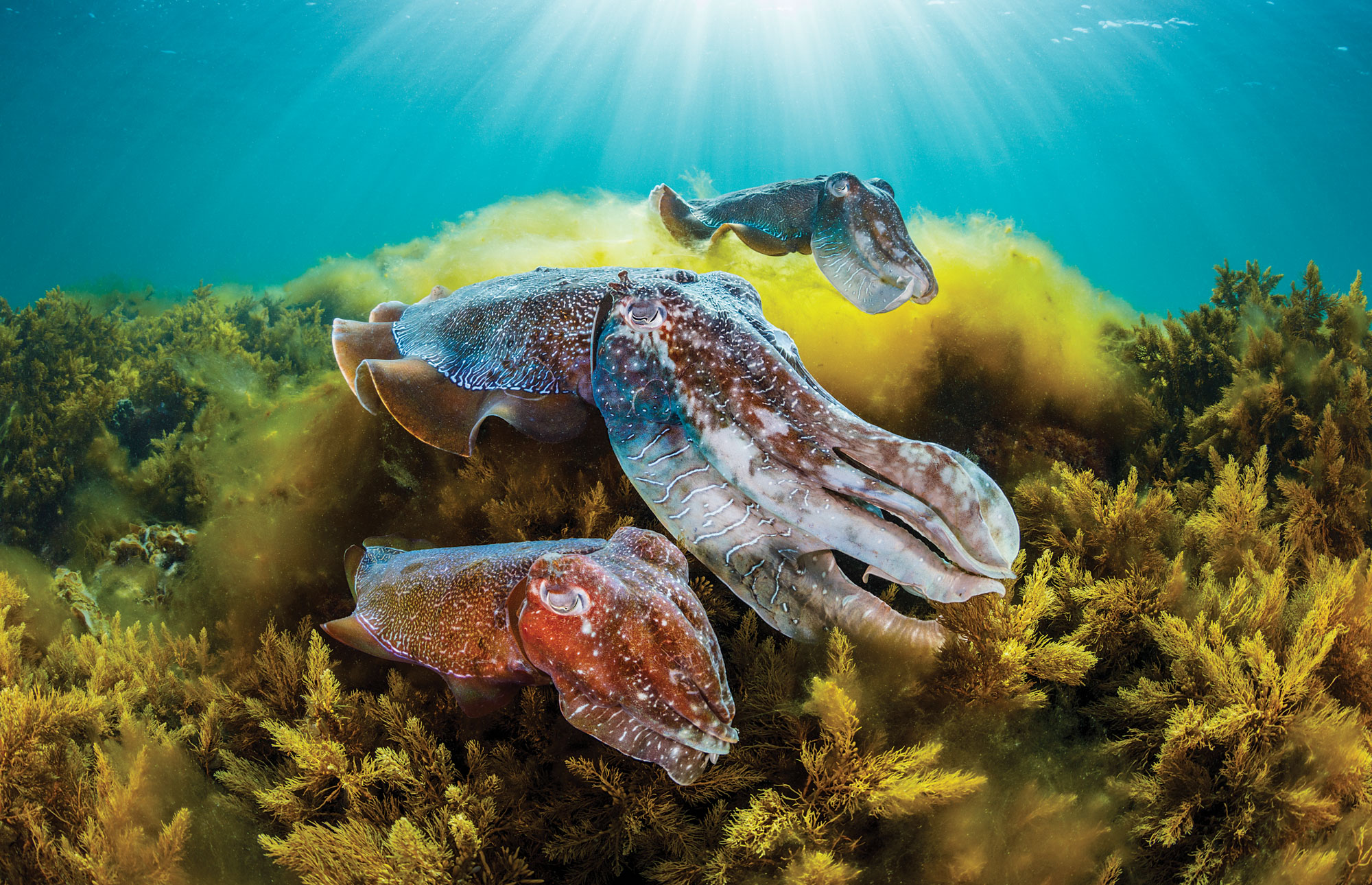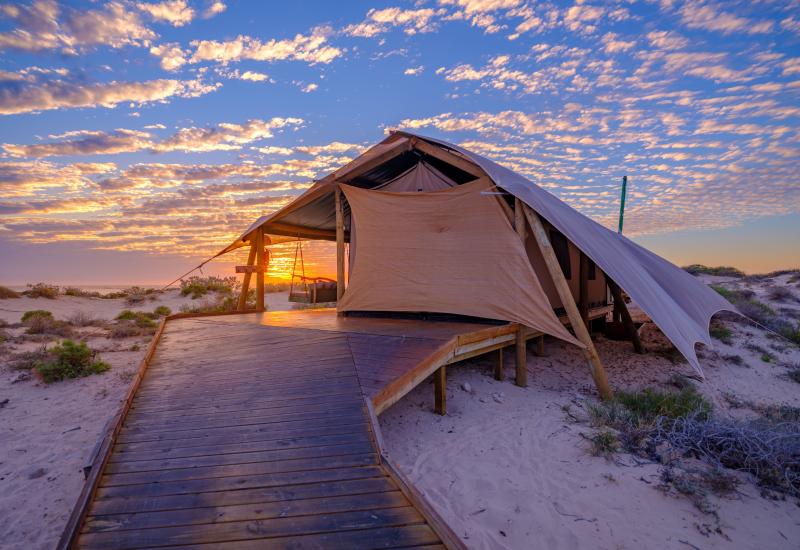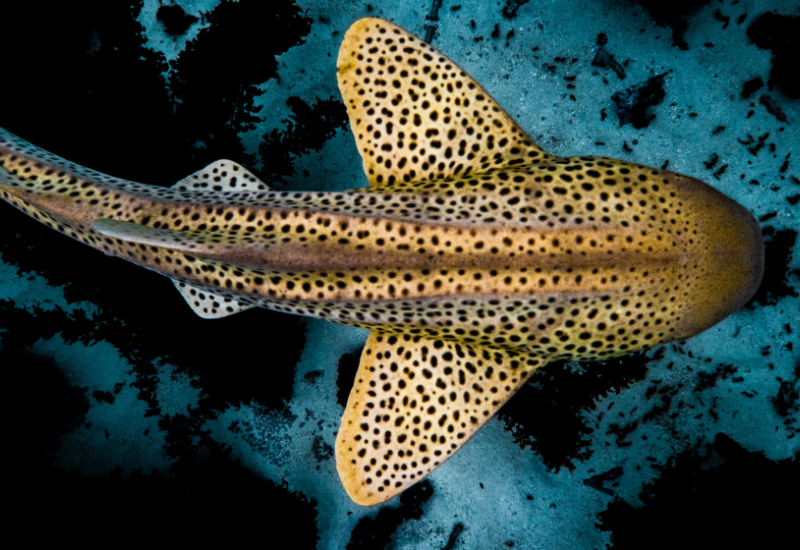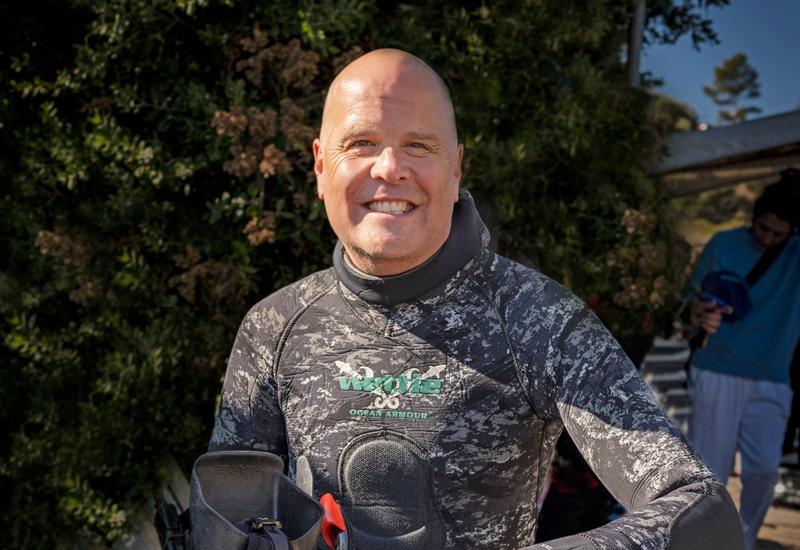What It's Like to Dive Australia's Cuttlefish Aggregation
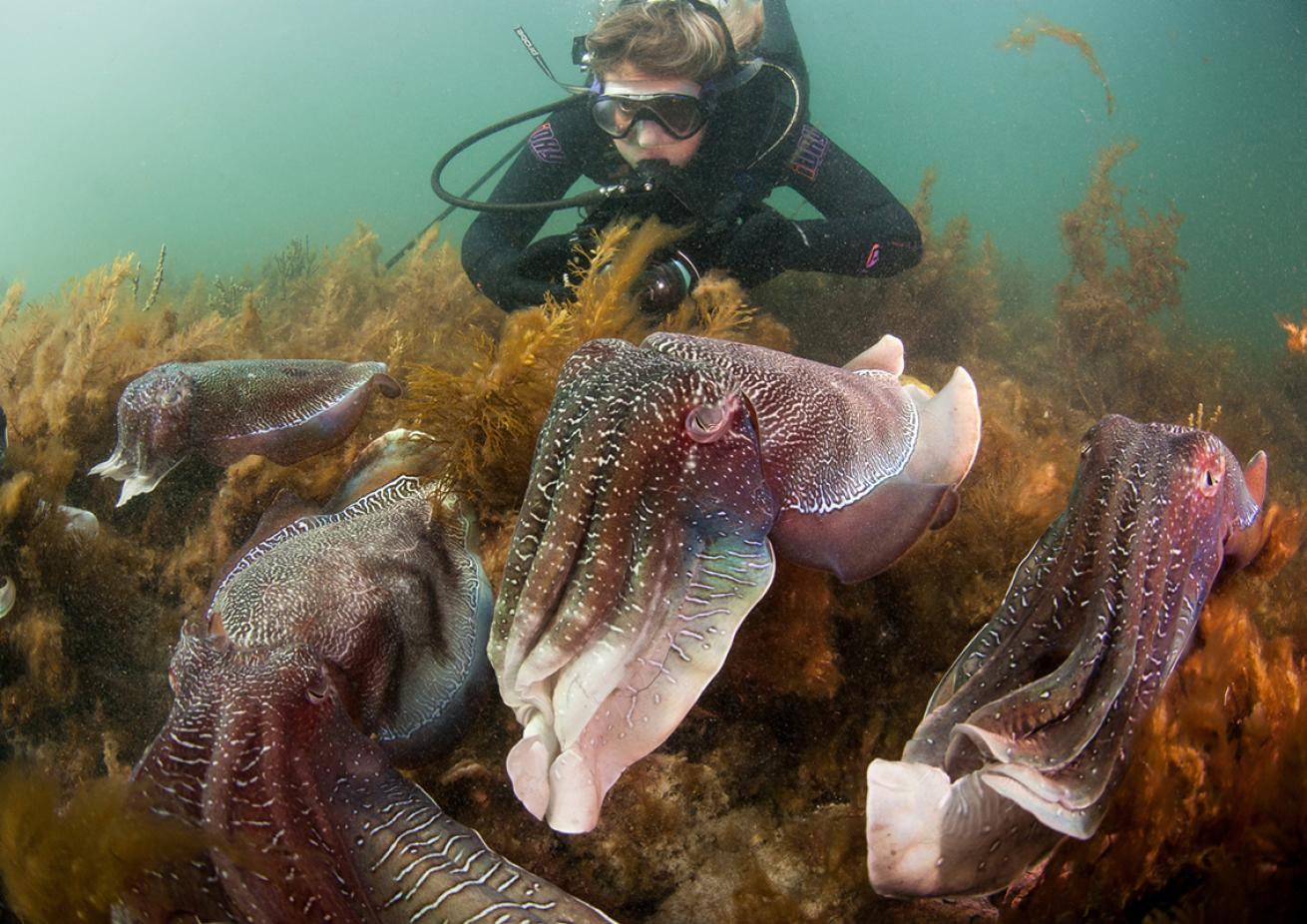
Carl CharterCuttelfish, which can grow up to three feet long, swarm en mass every year right off the coast of Whyalla, Australia.
If you dance to the beat of your own drum, you’ll relate to the Giant Australian cuttlefish. To call these magnificent cephalopods unique is an understatement. It would be difficult to dream up a creature like the Giant Australian cuttlefish: incredibly intelligent, can change color and pattern instantly, have three hearts, eight arms, two feeding tentacles, oh—and males can disguise themselves as females to give themselves a mating advantage.
I’ve traveled to the icy-cold waters of Whyalla, a small port town in South Australia, about four-and-a-half hours from the capital city of Adelaide, to dive with the largest annual aggregation of Giant Australian cuttlefish. During the winter months of May through August, thousands gather in Point Lowly, in the Upper Spencer Gulf Marine Park area of Whyalla.
“The Giant Australian cuttlefish aggregation at Whyalla is simply spectacular–flamboyant cuttlefish with pulsing waves of color moving across their bodies, males trying to ward off other males by making themselves look larger than they really are, or impersonating females to sneak matings”, explains Professor Bronwyn M. Gillanders, a prominent cuttlefish researcher and Head of School, Biological Sciences at the University of Adelaide. “They come to this narrow stretch of coastline to breed as it’s one of the few places in Upper Spencer Gulf where there are nice large rocky reefs with ledges under which to lay eggs.”
The frigid waters of Point Lowly average around 57 Fahrenheit in Aussie winters, so I arrive with an 8mm wetsuit, hood and gloves. Even with all the right gear, easing into the cold water from the beach is a shock to the system. Luckily, I don’t need to go far to find the cuttlefish enjoying the chill waters. A short swim l off the beach is all it takes to come face to face with swarms and swarms of them.
Only feet from shore, I already see them swimming in the shallows—six to 36 feet down is their ideal territory, making Point Lowly suitable for newer divers, snorkelers and freedivers.
The excitement of seeing one cuttlefish is nothing compared to seeing a joint kaleidoscope of changing color, movement and flow. Because the males greatly outnumber the females, there’s ample opportunity to observe the mating behaviors, like rapid color changing. Their undulating fin fringe gently moves them through water, but cuttlefish also use water for decidedly less peaceful jet propulsion. So, be warned, if you move closer to get a better look at the action, they might dart off before you realize what’s happened! This does not mean they are difficult to observe, however. Some cuttlefish are as large as small dogs, making them easy to observe in the clear waters from a distance
The cuttlefish don’t seem to notice our presence and go about their lives, pulsating between sparkling turquoise, ruby red, and the perfect olive green for seaweed camouflage. While getting to Whyalla takes some effort and a willingness to go cold water diving, the opportunity to observe such a unique phenomenon is something that can’t be experienced anywhere else in Australia—so rug up and jump in!

